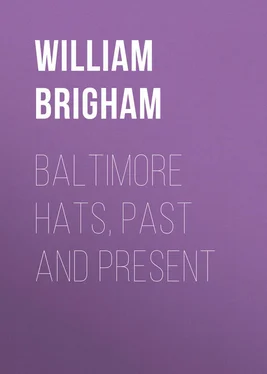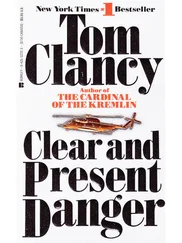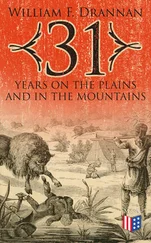William Brigham - Baltimore Hats, Past and Present
Здесь есть возможность читать онлайн «William Brigham - Baltimore Hats, Past and Present» — ознакомительный отрывок электронной книги совершенно бесплатно, а после прочтения отрывка купить полную версию. В некоторых случаях можно слушать аудио, скачать через торрент в формате fb2 и присутствует краткое содержание. Жанр: foreign_antique, foreign_prose, на английском языке. Описание произведения, (предисловие) а так же отзывы посетителей доступны на портале библиотеки ЛибКат.
- Название:Baltimore Hats, Past and Present
- Автор:
- Жанр:
- Год:неизвестен
- ISBN:нет данных
- Рейтинг книги:3 / 5. Голосов: 1
-
Избранное:Добавить в избранное
- Отзывы:
-
Ваша оценка:
- 60
- 1
- 2
- 3
- 4
- 5
Baltimore Hats, Past and Present: краткое содержание, описание и аннотация
Предлагаем к чтению аннотацию, описание, краткое содержание или предисловие (зависит от того, что написал сам автор книги «Baltimore Hats, Past and Present»). Если вы не нашли необходимую информацию о книге — напишите в комментариях, мы постараемся отыскать её.
Baltimore Hats, Past and Present — читать онлайн ознакомительный отрывок
Ниже представлен текст книги, разбитый по страницам. Система сохранения места последней прочитанной страницы, позволяет с удобством читать онлайн бесплатно книгу «Baltimore Hats, Past and Present», без необходимости каждый раз заново искать на чём Вы остановились. Поставьте закладку, и сможете в любой момент перейти на страницу, на которой закончили чтение.
Интервал:
Закладка:
The earliest manufacturing hatter in Baltimore, of whom any definite knowledge can be obtained, was David Shields, who kept store at No. 14 Gay street. As the location was on the east side of Gay and the seventh house from the corner of Baltimore street, it probably was about half-way between Baltimore and Fayette streets. Here he sold to his patrons the products of his "back shop" or factory, which was located on the south side of East, now Fayette street, at a point half-way between Gay and Frederick streets. Mr. Shields' father was from Pennsylvania. David Shields was born in the year 1737, and his descendants of to-day include some of the wealthiest and most refined citizens of Baltimore. In Scharf's "Chronicles of Baltimore" his name is mentioned, in connection with others, in the year 1769 as aiding by a general subscription in procuring an engine for the extinguishment of fires; this engine was for the "Mechanical Fire Company," and was the first machine of its kind in Baltimore, costing the sum of two hundred and sixty-four dollars.
Unfortunately, the information gained of Mr. Shields' business career is so meagre as to leave much to the imagination, but it is natural to suppose that in 1769, being thirty-two years of age, he must have been established in business.
That Mr. Shields was a public-spirited citizen is further proven by his connection with the First Baptist Society, being one of a committee constituted for the purpose of purchasing a lot upon which to erect a church; this was in 1773, two years before the Revolution. The church was built on Front street, upon the site now occupied by the Merchants' Shot Tower, and was the first Baptist Church erected in Baltimore.
The Federal Gazette announces the death of Mr. Shields, October 4, 1811, in the seventy-fourth year of his age; his funeral taking place from his residence, which was over his place of business, on Gay street.
What may have been the actual condition of the hat business of Baltimore just before the Revolution has been difficult to ascertain. Mr. Shields must have been in business during this period, and it is more than probable that in a town of the size of Baltimore at that date there must have been others engaged in this branch of business, but how many and who they were cannot be ascertained. It is very likely that the restriction placed by English rule upon most manufacturing industries prior to the Revolution operated detrimentally upon this industry also, and while the ordinary kind of wool felt hats were made by the hatter in his own shop, undoubtedly most of the fashionable hats sold and worn at that time were of English or French make. Paris (which then, as well as now, was the axis upon which revolved the world of fashion) possibly supplied the wants of Baltimore's highborn gentry, always famous for exquisite dress and refined taste, with the French chapeau – the ton of those days.
As there are no existing detailed statistics of the business of Baltimore during the Revolutionary War, the record of some business firms has been entirely lost, and although some trades have received slight mention in the published histories of the city, a trace of the existence of but two hatters, who afterwards continued in business, is to be found. Since it is known as a fact that fourteen hatters were engaged in business in Baltimore, not later than ten years after the close of the war, we have a right to suppose that more than two must have been in business during the existence of the war.
Among the proceedings of the "Council of Safety" of Maryland, organized at the outbreak of the war, is found the following order: "March 2, 1776. The Council of Safety authorize Major Gist to contract for fifty camp-kettles and as many hats as may be necessary for the battalion, not to exceed 7 shillings apiece." Again, April 6, 1776, "Commissary of Stores of Baltimore is ordered to send to Annapolis 200 of the hats arrived from Philadelphia." Why Baltimore hatters did not supply the needed hats for Maryland militia we cannot say, but probably a sharp competition for so large a contract wrested it from them.
The adoption of the "cocked" hat in its various forms as a portion of the military costume of the Continental Army brought about the necessity of making a distinction between civil and military wear.
After the close of the American Revolution France was in a state of civil insurrection, and the French "chapeau" of that time was constructed upon a plan somewhat similar to that of the "cocked" hat. With the termination of the French Revolution appeared the "steeple-top" hat, having a conical crown with stiff curled brim, drooping front and rear, being trimmed with a very wide band and ornamented in front with a huge metal buckle, a change radical enough from those preceding it, but admitting a question as to its comparative intrinsic beauty or to its being a more becoming part of male attire; the style withal certainly proved acceptable, for with slight modifications it has continued and is now embodied in the fashionable silk hat of the present time.
Thus with the opening of the nineteenth century commenced the era of what may be correctly termed the high hat. Ashton, in "Old Times," says of the style of 1790-95: "The 'cocked' hat had gone out, and the galling yoke of the 'chimney pot' was being inaugurated, which was as yet of limp felt."
In fashions prevailing at the opening of the new century, particularly those of wearing apparel both for ladies and gentlemen, Paris took the lead, and though with many articles to-day Parisian designs and ideas secure the largest share of popularity, yet in regard to hats for gentlemen it can proudly be said that American-made hats are ahead in point of style and quality, and are no longer dependent upon foreign ingenuity for assistance in securing for them a ready sale; in fact, no American industry to-day stands in a more enviable position relatively to foreign manufactures than does that of hat-making.
The fancy for sentimental hits and political phrases indulged in by modern hatters seems to have been the rage at an earlier period, as is evident from the following, published in the London Times of December 4, 1795: "If the young men of the present day have not much wit in their heads they have it at least in their hats ." Among the pleasantries we have seen in this way are the following: "Not yours," "Hands off," "No vermin," and "Rip this as you would a hot potato," and other charming sallies of refined and elegant vivacity.
But the wittiest linings are the political ones. The other day we observed one perfectly clean and tidy in which was written: "Avaunt! Guinea Pig," and on the lining of a very powdery hat that lay in the window of the same room were inscribed the two monosyllables "Off-crop." "Guinea pig" and "Off-crop" were probably local political distinctions of the day.
AFTER THE REVOLUTION
NOTuntil after the Revolution is it apparent that any attempt was made in Baltimore to concentrate the hatting industry into a legitimate business upon any extensive scale, or to separate the manufacturing from the retail branch of business; in fact, far into the new century was it the practice of those who manufactured extensively for the trade, to continue to keep in operation also a retail establishment.
The general system of conducting the hat business at the time of which we are now writing was for the hatter to have his "back shop" in the rear and accessible to the "front shop," where the proprietor and his "prentice hand" made the needed supply for the existing or future small demand likely to come; for hats in those days were "built" for service, not for show, and in a manner quite different from those suited to the modern requirement of almost a monthly change in style. Then the principle demand came from maturing youth, desiring to assume suitable dignity for entrance into manhood, by procuring a "beaver" which, unless he lived to a patriarchal age, might serve him during his natural life, and that, too, without fear of banishment from society for being out of the fashion.
Читать дальшеИнтервал:
Закладка:
Похожие книги на «Baltimore Hats, Past and Present»
Представляем Вашему вниманию похожие книги на «Baltimore Hats, Past and Present» списком для выбора. Мы отобрали схожую по названию и смыслу литературу в надежде предоставить читателям больше вариантов отыскать новые, интересные, ещё непрочитанные произведения.
Обсуждение, отзывы о книге «Baltimore Hats, Past and Present» и просто собственные мнения читателей. Оставьте ваши комментарии, напишите, что Вы думаете о произведении, его смысле или главных героях. Укажите что конкретно понравилось, а что нет, и почему Вы так считаете.












